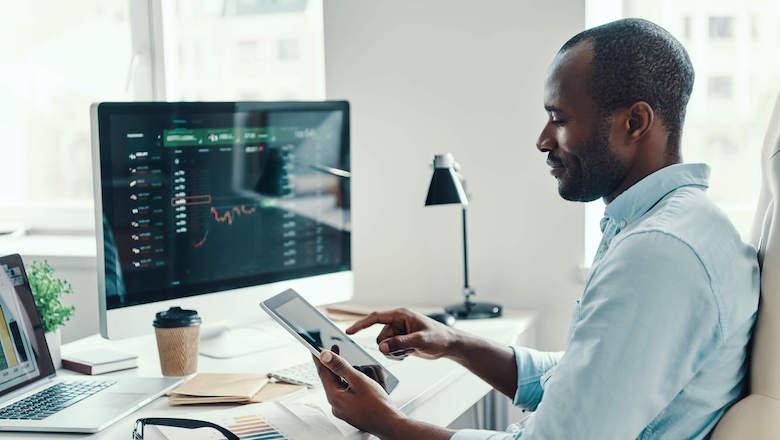
How to Open an Online Forex Account: A Comprehensive Guide
In the world of financial trading, Forex (foreign exchange) stands out as one of the most exciting and dynamic markets available to both seasoned traders and newcomers alike. For those eager to dive into currency trading, understanding how to open an online Forex account is the first critical step toward success. In this article, we will cover everything from choosing the right broker to understanding the trading platform, ensuring you are well-prepared to embark on your Forex trading journey. To enhance your trading experience, you might also want to explore the open online account for forex trading Top Mobile Trading Apps that can help you trade on the go.
Choosing the Right Forex Broker
Before opening an account, it’s essential to do thorough research on various Forex brokers. Different brokers offer different services, trading platforms, and fee structures. Here are some key factors to consider:
- Regulation: Ensure that the broker is regulated by a reputable authority in the financial sector. Regulations help to protect your funds and ensure fair trading practices.
- Trading Fees: Brokers may charge spreads, commissions, or management fees. Compare these costs to find a broker that fits your budget.
- Trading Platform: Look for brokers that offer a user-friendly trading platform with the features you need, such as advanced charting tools and real-time market data.
- Customer Support: Reliable customer support is critical, especially for new traders who might have questions or encounter issues.
Opening Your Forex Account
Once you’ve chosen a broker, the next step is to open your Forex trading account. Here’s how you can typically do this:
1. Registering with the Broker
Visit the broker’s website and look for the account registration option. Most brokers will have a “Sign Up” or “Open Account” button prominently displayed. During this process, you’ll need to provide personal information such as your name, address, date of birth, and contact details.
2. Providing Identification
In compliance with international regulations, brokers will require verification of your identity. This usually involves uploading a government-issued photo ID (such as a passport or driver’s license) and a utility bill or bank statement as proof of your address.

3. Choosing the Account Type
Depending on the broker, you may have different types of accounts to choose from, such as demo accounts, Standard accounts, or ECN accounts. Consider your trading style and experience level when making this choice.
4. Making an Initial Deposit
After your account is set up and verified, the next step is to fund your account. Brokers provide various funding methods, including bank transfers, credit/debit cards, and e-wallet services like PayPal or Skrill. Review the deposit options and select the one that is most convenient for you.
Understanding the Trading Platform
Once your account is funded, you’ll need to familiarize yourself with the trading platform provided by your broker. Most brokers offer platforms like MetaTrader 4 or MetaTrader 5, known for their robust features and usability. Spend some time exploring the platform’s functionalities, such as:
- Charting Tools: Learn to read and analyze charts effectively, as they will be essential for making informed trading decisions.
- Order Types: Understand the different order types, such as market orders, limit orders, and stop-loss orders, as they can help manage your trades more effectively.
- Technical Indicators: Familiarize yourself with technical indicators that can aid in your trading strategy.
- Order Execution: Test the speed and reliability of order execution, which is crucial for successful Forex trading.
Developing a Trading Strategy
Before you rush into trading, it’s important to develop a sound trading strategy. Your strategy should include the following components:
- Goals: Define your trading goals—whether it’s short-term gains or long-term investments.
- Risk Management: Implement strategies to manage your risk, such as setting stop-loss orders and ensuring that you never risk more than a certain percentage of your total capital on a single trade.
- Market Analysis: Utilize both technical and fundamental analysis to evaluate market trends and make informed decisions.
Practicing with a Demo Account
Many brokers offer demo accounts where you can practice trading without risking real money. This is an excellent way to get comfortable with the trading platform and hone your skills before transitioning to a live trading environment. Take advantage of this opportunity to test your strategies and build confidence.
Conclusion
As you embark on your Forex trading journey, remember that education and research are key factors in achieving success. By following the steps outlined in this article and continuously improving your skills, you can build a solid foundation for your trading career. Opening an online Forex account is just the beginning; diligence, discipline, and a well-crafted strategy will play vital roles in your trading success.
Always stay updated on market trends, continually educate yourself, and consider leveraging tools like mobile trading apps to enhance your trading experience. With the right preparation and mindset, you can navigate the exciting world of Forex trading with confidence.
